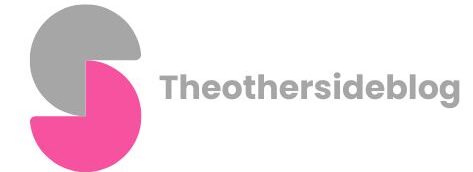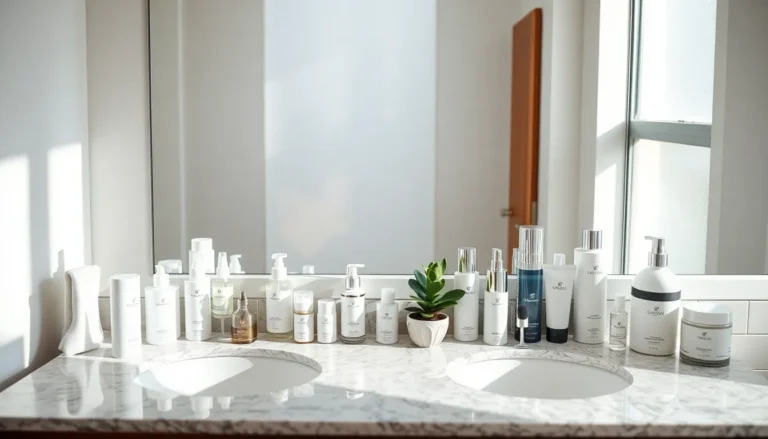In a world overflowing with distractions, capturing user attention is like trying to catch a greased pig at a county fair. The “user attention zone” is where the magic happens—it’s the sweet spot where engagement peaks and users actually pay attention. Understanding this zone can transform a mundane website into a captivating experience that keeps visitors glued to the screen.
Imagine your content as a delicious slice of pizza, but if it’s buried under a mountain of toppings, no one will take a bite. By honing in on the user attention zone, marketers can serve up content that’s not just palatable but downright irresistible. Let’s dive into the art and science behind this elusive zone and discover how to turn fleeting glances into lasting engagement.
Table of Contents
ToggleUnderstanding User Attention Zone
User attention zone refers to the specific area where users display optimal engagement on digital platforms. Identifying this zone informs strategies that enhance user experience.
Definition of User Attention Zone
User attention zone describes the region on a webpage or application where users focus their gaze most intently. This zone typically encompasses the top half of the screen, where essential content and calls to action often appear. Research shows that users interact more readily with elements positioned within this area. Recognizing this pattern helps marketers and designers create layouts that attract and retain user interest.
Importance of User Attention in Design
User attention plays a critical role in design effectiveness. Focusing on high-impact visuals and clear messaging captures user interest quickly. Engaging designs lead to improved conversion rates and reduce bounce rates. Studies indicate that well-structured content retains user attention longer, encouraging deeper exploration. Designers prioritize simplicity, ensuring each element serves a specific purpose without overwhelming the user. Enhancing clarity in design directly contributes to maximizing user engagement.
Factors Influencing User Attention Zone
Several factors shape the user attention zone, impacting engagement and interaction levels.
Visual Hierarchy
Visual hierarchy plays a crucial role in guiding user focus. It involves arranging elements based on their importance and prominence. Users typically engage with larger images or bold text before smaller ones. Clear differentiation of headings, subheadings, and body text helps prioritize information. Effective use of color contrasts draws attention to key areas. Marketers can enhance their designs by implementing an intuitive visual flow that naturally directs users to critical content. Consistency in visuals fosters familiarity, making it easier for users to navigate.
Content Layout
An effective content layout significantly influences user attention. Users prefer straightforward designs that avoid overwhelming them with clutter. Strategic placement of essential information in the top half of the interface captures user focus quickly. Using white space around elements enhances readability and reduces cognitive overload. Grabbing attention with impactful visuals can spark interest, prompting users to explore further. Aligning content blocks logically encourages smoother navigation and keeps users engaged longer. Structured layouts promote interaction by simplifying the user experience and facilitating easy comprehension.
Techniques to Optimize User Attention Zone
Enhancing the user attention zone involves specific techniques that improve engagement and interaction. Two significant factors are color usage and font selection.
Color Usage
Color choice impacts user emotions and attention. Bright colors attract immediate focus, while muted tones provide a calming effect. Primary colors often stand out and guide users to important areas like call-to-action buttons. Contrast plays a crucial role; using light text on a dark background enhances readability. Additionally, a cohesive color scheme across the website reinforces brand identity. For instance, strategic application of highlighting colors can draw attention to key messages and offers. Effective use of color can create visual pathways that lead users effortlessly throughout the interface.
Font Selection
Font selection influences legibility and user experience significantly. Sans-serif fonts generally provide clarity and modernity, catering to mobile and desktop users alike. Size matters; larger fonts for headings establish importance, while smaller sizes can be used for less critical information. Consistency across font types maintains a cohesive look and feel, which boosts trustworthiness. Different font weights allow for emphasis on crucial elements, guiding users’ focus. For example, using bold fonts for headlines ensures they catch attention quickly. Ultimately, a good font choice enhances readability, encouraging users to engage with content for longer periods.
Measuring User Attention Zone
Understanding how to measure the user attention zone is crucial for optimizing design and enhancing engagement. Several methods exist to gauge user focus and interactions.
Eye Tracking Methods
Eye tracking provides insights into where users gaze on a webpage or application. This technique involves using specialized devices that track eye movements, noting the duration and intensity of focus on specific content areas. Data from eye tracking can reveal patterns of visual attention, guiding marketers in placing vital information where it captures the most focus. Heat maps generated from eye tracking illustrate hot and cold zones, with hot zones indicating areas of high attention. Analyzing these maps helps refine visual hierarchy and identify elements that need adjustment.
A/B Testing
A/B testing allows marketers to compare two design variations to determine which one captures more user attention. By presenting different layouts, colors, or content structures to separate user groups, it’s possible to measure engagement metrics such as clicks and time spent on the page. Results derived from A/B testing provide actionable insights that lead to data-driven design improvements. This method enhances the understanding of user preferences and behaviors, allowing for more effective content placements in the user attention zone. Implementing findings from these tests supports continuous optimization for maximizing user engagement.
Mastering the user attention zone is essential for creating engaging digital experiences. By strategically positioning key content and employing effective design techniques, marketers can significantly enhance user interaction. Understanding the dynamics of visual hierarchy and layout empowers designers to craft interfaces that captivate users from the moment they arrive.
Utilizing tools like eye tracking and A/B testing allows for continuous refinement of designs, ensuring that they resonate with audiences. As attention spans shorten, the importance of clear messaging and impactful visuals cannot be overstated. Prioritizing the user attention zone not only improves engagement but also fosters deeper connections with visitors, ultimately driving conversions and success.






